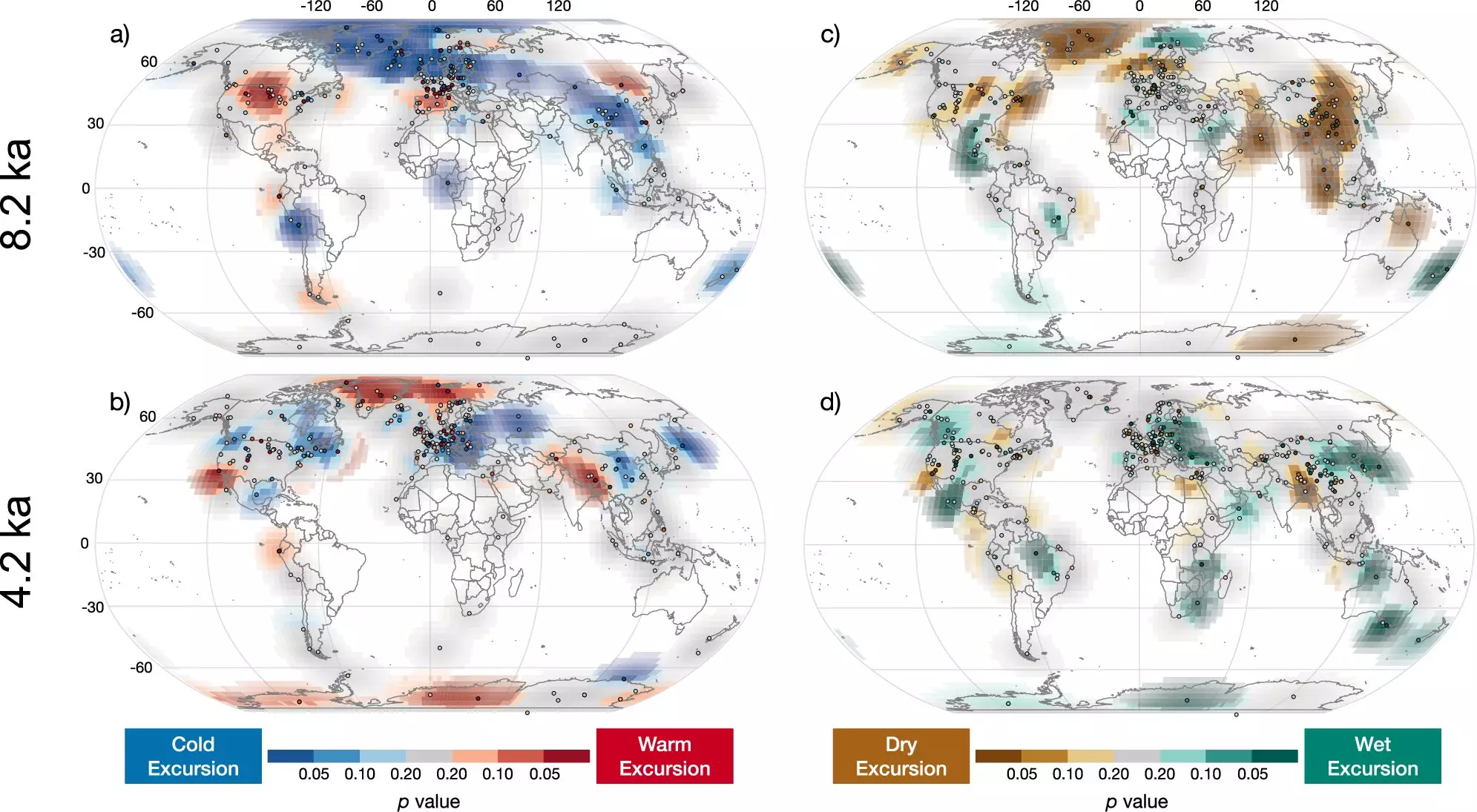For decades, the 4.2 kiloyear event (4.2 ka)—often cited as a pivotal moment in climate history—has been associated with catastrophic impacts including the decline of early civilizations and profound alterations in global weather patterns. However, recent research emerging from Northern Arizona University offers fresh perspectives that challenge the notion of a singular, devastating megadrought that redefined human history. Rather than portraying the event as a monolithic disaster, this study positions it as one of a multitude of climate shifts experienced during the Holocene epoch, which begins approximately 11,700 years ago.
The groundbreaking research, published in *Nature Communications*, is not only significant for its findings but also for its collaborative approach. By utilizing more than 1,000 datasets, researchers, including graduate students under the guidance of faculty, embarked on an ambitious project that fostered a sense of participation and engagement in scientific inquiry. Conducting such a broad examination of climate data through a classroom framework is a novel pedagogical innovation. According to lead author Nicholas McKay, this structure enabled students to contribute meaningfully to research that could advance our understanding of climate change.
The central inquiry revolved around whether the 4.2 ka drought truly warrant classification as a global geologic marker. By developing enhanced methodologies to scrutinize climate patterns throughout the Holocene, the team was able to analyze temperature and precipitation shifts on a greater scale than ever before, thereby deepening their comprehension of historical climate variability.
As the research team delved deeper into the climate records, they unearthed a more nuanced narrative regarding the 4.2 ka event. Contrary to earlier interpretations that suggested a uniform global crisis, the latest findings indicate that the effects of the drought were neither homogenous nor unprecedented. While some regions witnessed notable climatic shifts around this time, other locations showed minimal or entirely absent effects. Indeed, the analysis revealed that past climate activity consisted primarily of multiple localized events rather than a singular catastrophic occurrence.
Moreover, the team identified other significant climatic events within the Holocene, such as the 8.2 ka event, characterized by a marked cooling and drying spell, particularly felt in the North Atlantic. They also highlighted temperature fluctuations that coincided with periods known as the Dark Ages Cold Period and the Medieval Climate Anomaly. These findings compellingly argue against the characterization of the 4.2 ka drought as a unique turning point, instead suggesting that abrupt climate changes were relatively commonplace.
The implications of this research stretch beyond mere historical inquiry; they underscore the complexity of understanding climate dynamics. As co-author Leah Marshall notes, interpreting local weather variations as significant global phenomena can lead to misunderstandings regarding the past and how it informs contemporary climate science. The study reveals that while abrupt climatic changes occurred, inferring their global significance demands a more discerning and rigorous analysis of local impacts.
Crucially, this research recontextualizes our understanding of climate variability: while natural fluctuations existed and occurred in localized areas, comprehensive global patterns were far less common. This distinction is vital as we strive to apply historical insights to contemporary climate models, emphasizing the need for incorporating both natural variability and anthropogenic factors in future climate predictions.
Ultimately, this research not only advances the understanding of past climate changes but also provides crucial insights for anticipating future variations. As McKay poignantly points out, the distinction between historical natural fluctuations and current human-induced climate changes is essential for comprehending the evolving dynamics of our planet. With unprecedented levels of carbon emissions now affecting global temperatures, recognizing the historical context of climate variability serves as a vital tool for scientists as they work to develop relevant models and strategies for future challenges.
By publishing their analytical methods and engaging students in this critical research, the Northern Arizona University team has not only enriched academic discourse but also paved the way for a more nuanced exploration of our planet’s climatic future. In seeking to understand both the historical and contemporary implications of climate change, we equip ourselves with a deeper appreciation of Earth’s environmental systems and the myriad factors that continue to shape them.

